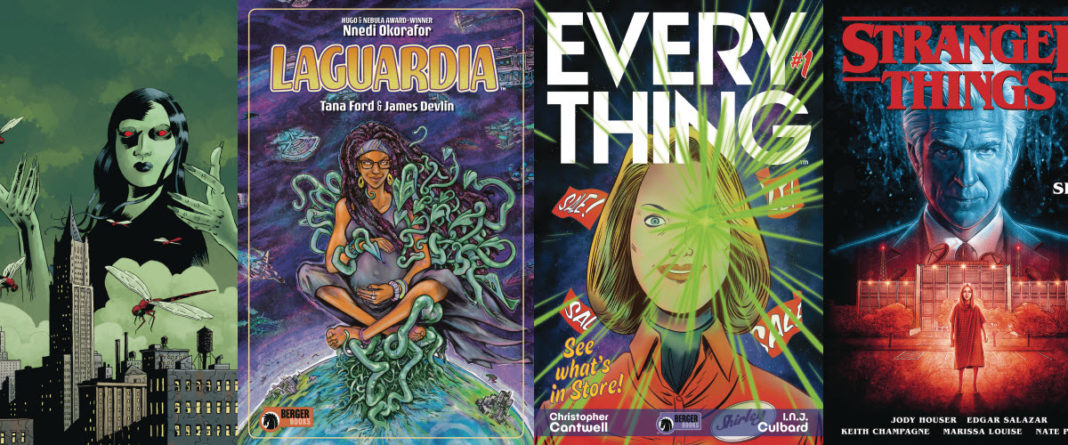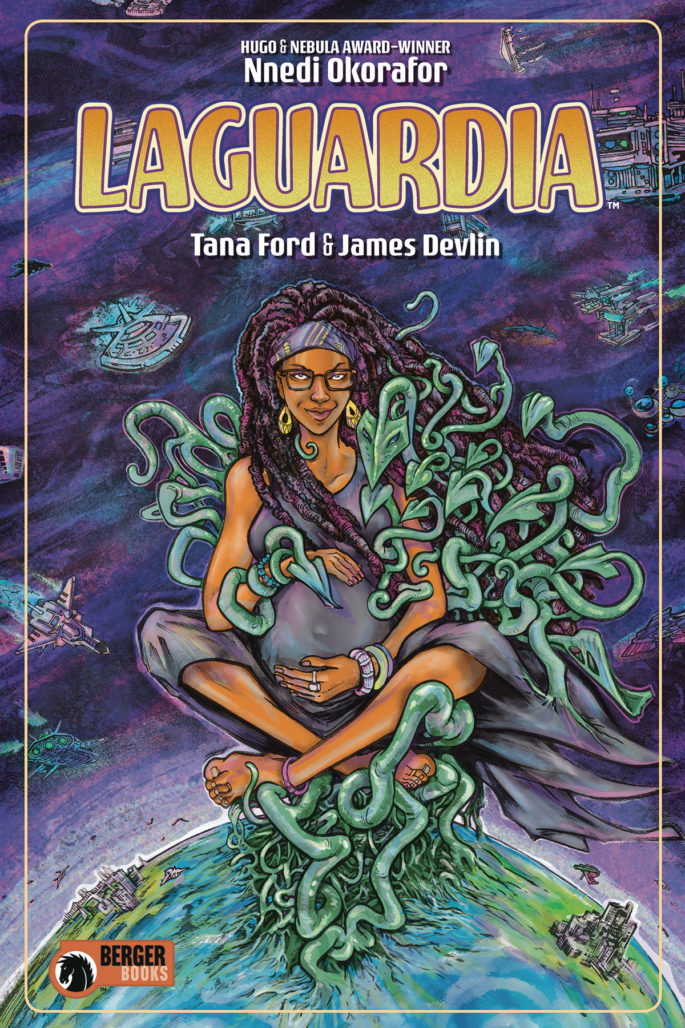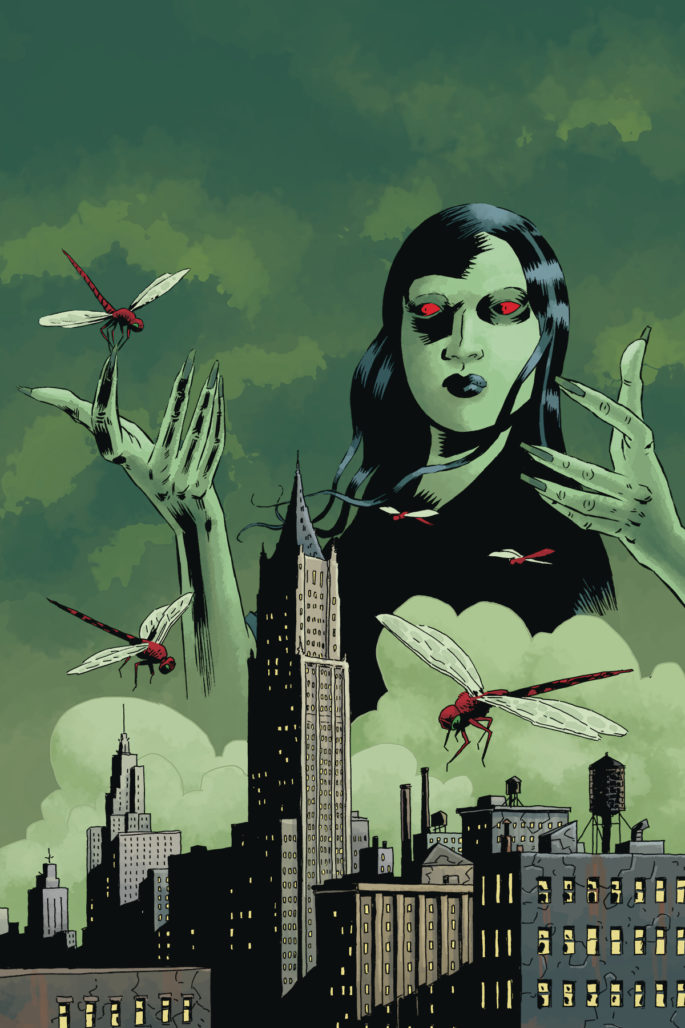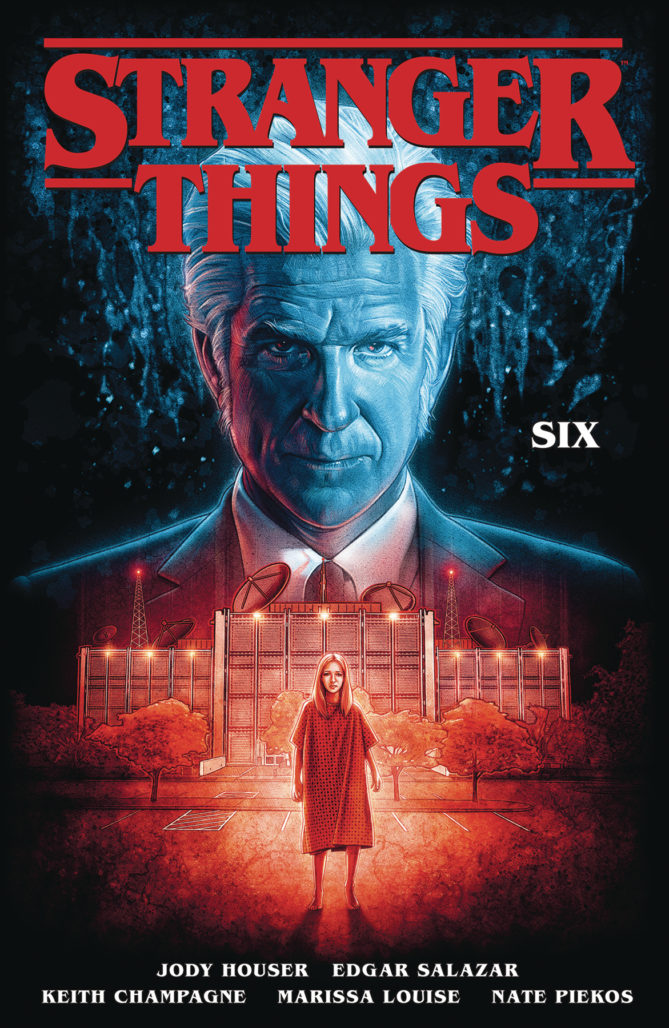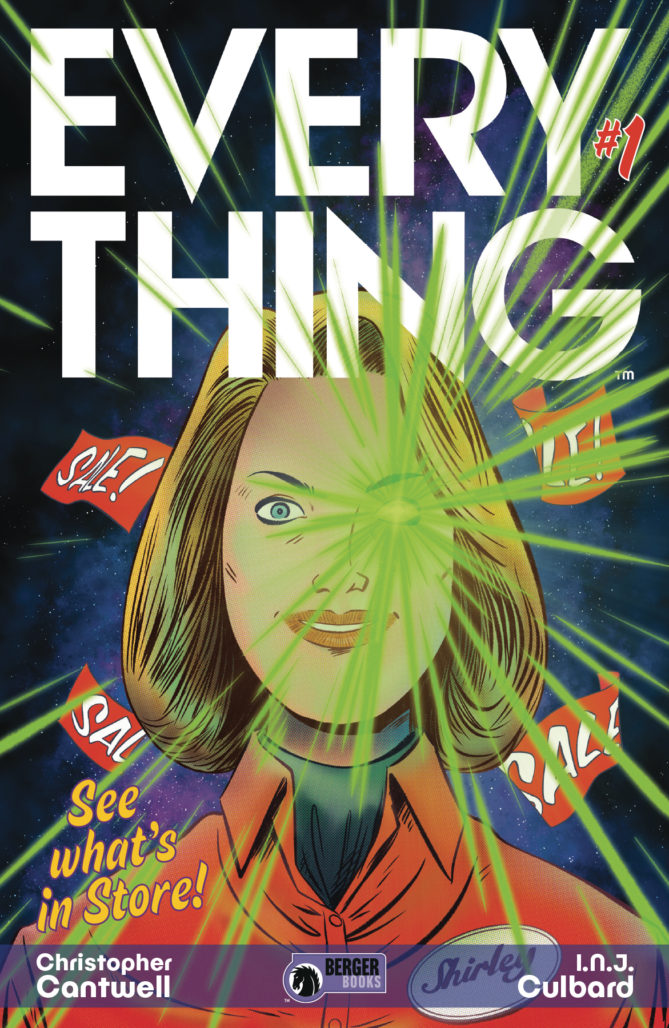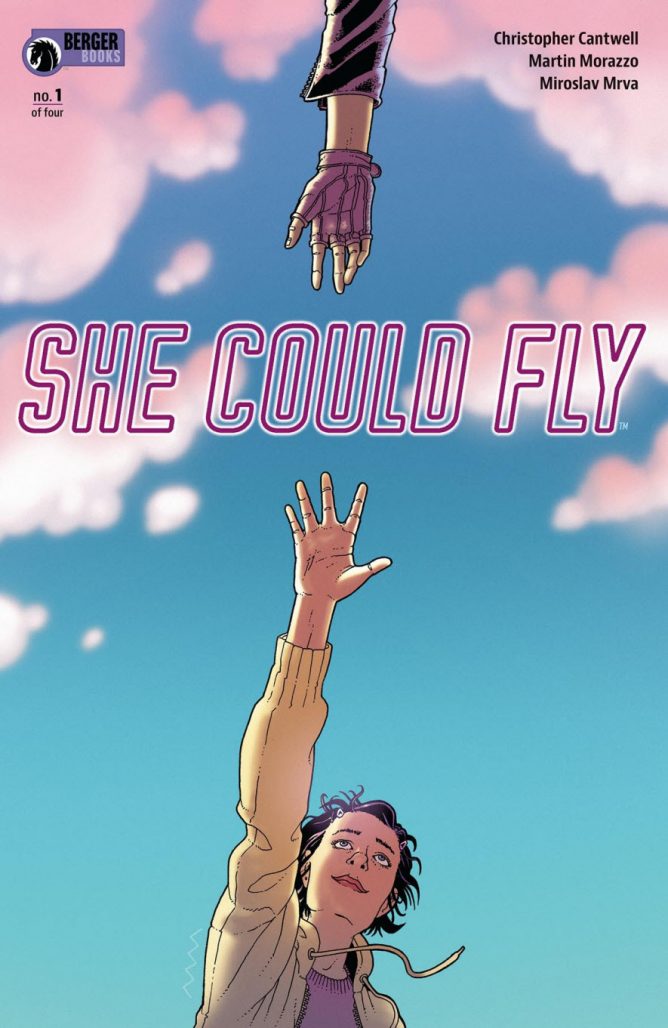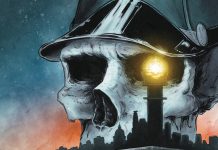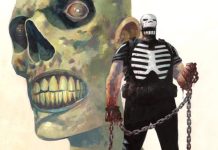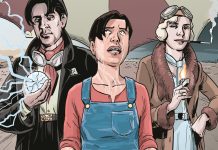Dark Horse Comics has been putting out some of the most interesting comics on shelves today. From superhero deconstruction to alien immigration allegories to examinations of mental health, Dark Horse and the Karen Berger-curated Berger Books imprint are telling interesting, topical stories for mature audiences. With the “Berger Books and the Writers’ Room: Stories Come First” panel, Berger and an array of Dark Horse writers including Christopher Cantwell, Nnedi Okorafor, Jeff Lemire, and Jody Houser took to the stage at SDCC for a discussion on storytelling and the inspirations behind their various work.
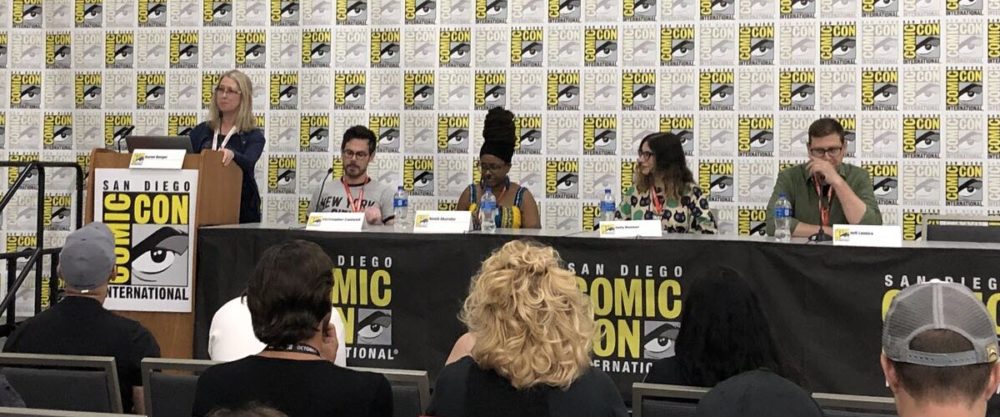
Berger kicked off the panel with introductions for each of the writers on the stage. Cantwell began with discussion of his Berger Books projects, including She Could Fly and the forthcoming Everything. The series is set in Holland, Michigan, in 1980, and revolves around a big box department store called The Everything Store, and psychic disturbances that occur in the town following the opening of the store. He describes the store as not sinister but strange, and devoted to making everyone happy. Berger said Everything artist INJ Culbard took inspiration from old Sears catalogs in designing some of the series.
The collected edition of LaGuardia, Okorafor’s first Berger Books project, was recently released. The series is illustrated by Tana Ford. Berger said her goal with the Berger Books imprint is to work with more women and expand the talent pool to include more diverse voices, and to put out work that would appeal to everyone regardless of gender or sex. She praised Okorafor’s distinctive voice as a novelist as being a reason she wanted to work with her. Okorafor described LaGuardia as being about an apartment building in Brooklyn where a group of African and extraterrestrial immigrants live together.
Okorafor said LaGuardia was inspired by an incident she had at LaGuardia where she was stopped by TSA because of the size of her hair. She said they did an invasive pat-down and also made her take her hair down and examined every single dreadlock. Afterward she got out to her car and realized she had a can of mace in her bag, which she should have been stopped by TSA for but they didn’t catch it because they were so intent on checking her hair. She said the event has stuck with her, and that it inspired the creation of the series, which follows a main character, Future, who opens the series by smuggling an extraterrestrial baby through TSA. Berger said the elevator pitch of the series was “A Contract With God with African-Americans.”
Berger next talked briefly about Ruby Falls, a new Berger Books series written by Ann Nocenti and illustrated by Flavia Biondi, who she said was introduced to her by Lemire. The series is a neo-noir mystery set in a small town and involves three generations of women.
Berger joked that there are actually three Jeff Lemires in the world in order to write all of the books he’s working on. On the subject of the recently-launched Black Hammer/Justice League miniseries, Lemire said Dark Horse emailed him one day to say that DC was interested in the crossover. He said he never thought he would go back to DC after leaving his exclusive contract with the publisher, and he was excited to return for the crossover. Artist Michael Walsh draws the series. Lemire also mentioned the newly-announced Skulldigger + Skeleton Boy, another Black Hammer spin-off series, and the forthcoming conclusion of the ‘farm story’ in Black Hammer: Age of Doom #12. He said he and Dean Ormston have already started working on the third part of their Black Hammer trilogy, which follows Lucy Weber as the new Black Hammer.
Berserker Unbound was next, which Lemire is writing with artist Mike Deodato Jr. He said they initially pitched the series to Marvel, who kept saying no, which they found out was eventually because Marvel had regained the rights to Conan. He described the series as a buddy comedy about a barbarian who finds himself in the modern world.
Houser next talked about Critical Role: Vox Machina Origins II. She said she was brought in to work on the series after Critical Role creator Matthew Mercer was unavailable to work on it. She said she’s enjoying mining the Critical Role history in order to create the histories for the characters.
On the topic of her other current Dark Horse series, the Stranger Things prequel Stranger Things: Six, Houser talked about the series as examining the history of the program that created Eleven. She said the only requirement she had for writing about the program was not to use Number One. The series includes Three, Six, and Nine and Nine-and-a-half, who are twins where one has powers and the other doesn’t. The third issue of the four-issue miniseries, drawn by Edgar Salazar and Keith Champagne, is released at the end of this month.
Before opening the floor for audience questions, Berger announced that She Could Fly is now in development for television at AMC. Cantwell, who as the co-creator of Halt And Catch Fire has a previous relationship with AMC, is working with the network to develop the series. Berger will act as an executive producer for the series, as will Cantwell, Dark Horse’s Mike Richardson and Keith Goldberg, and Breaking Bad and Better Call Saul producers Melissa Bernstein and Mark Johnson.
Opening the floor for questions, a fan asked Berger about the art of editing comics. Berger said a good editor knows when to edit and when not to edit, and that she always tries to work with writers with whom she’s “simpatico,” steering the writer in the direction of making the story the best it can be. Okorafor praised Berger for helping her both to juggle several different projects at once and to differentiate the style of her writing from other books like Shuri for Marvel and LaGuardia. Berger said that when she works with novelists they always seem to be reticent to get their voice out, and she has to encourage that from them.
An audience member asked about how an editor works to build the rapport between a writer and an artist. Sometimes they come in together, Berger said, but other times it’s about finding the right person to illustrate the story and someone who can get along with the writer (they joked that Cantwell is hard to get along with). As a writer and artist, Lemire talked about being able to take shortcuts in his scripts sometimes, but that it’s different for every artist he works with. At this point, since he’s working with artists like Ormston and Gideon Falls’s Andrea Sorrentino with whom he’s worked for a while now, he said they have a sort of shorthand where they know what each other needs. He said his general rule is to just give the script what it needs to act as a springboard for the artist.
Berger asked the panelists about what they bring from their own lives to their writing. Houser mentioned a story she wrote for Vertigo for the Magenta CMYK one-shot. Thinking about the color, she went back to ‘90s Barbies, which then led her to write a story about a girl dealing with her grandmother’s death through the use of Barbie dolls. She said stories like that are the ones that have the most power because they involve the writer getting something out on the page that they didn’t know they needed to get out.
For Okorafor, being a child of immigrants and the issue of identity is an important thing for her, as is the overall issue of immigration. She talked about analyzing how she relates to the US and how she relates to Nigeria, which is where her parents are from. She said LaGuardia is not a rant about immigration, but that it’s definitely informed by her thoughts on the topic.
Cantwell said She Could Fly spun out of his own struggles with OCD. He said he tries not to make his work his diary, but that he does use personal experience to try to make his stories universal for everyone. Everything that Luna does in She Could Fly is about the pursuit of happiness, he explained, which everyone can relate to and respond to, as well as the examination of mental health in the series.
Lemire said most of his stuff comes from his childhood, and joked that he tries not to think about it too much. He said he grew up on a farm in a very small town and was very isolated, left alone with his imagination. He said his graphic novel Essex County is likely the most autobiographical of his work, but even then it’s primarily an emotional connection that he feels with the characters, regardless of what type of story it is. Berger said her favorite stories are the ones where she can feel the personal connection from the writer.
Berger’s final question for the panelists was to name other writers who have influenced them, regardless of medium. Lemire said he grew up reading Marvel and DC Comics, but when he became a teenager they didn’t connect with him as much. He cited the early wave of Vertigo writers as inspirations for him to become a cartoonist and writer. Berger joked that Lemire was at the perfect age when Vertigo launched to warp his mind. Houser said reading novels by Mary Downing Hahn was the first time she felt like a writer made things really real and not sanitized for kids. Houser said she lived in an area where Hahn was a local librarian, but she never got up the courage to go talk to her.
Okorafor didn’t start writing until she was 20 when she was hospitalized after a sports injury and had nothing to do but write. As a teenager she said she went through a phase where she read nothing but Clive Barker, Robert McCammon, and Stephen King. She said she developed a love for storytelling during that time. Cantwell said he loves Dan Ackroyd-written scripts because of their bizarre details, many of which are made up but all of which are meticulously researched. He appreciates that level of devotion to the details, and he tries to bring that to his work. He also said he loves the book The Indian in the Cupboard, or any story about little people like David the Gnome.
With that Berger thanked the panelists to a round of applause from the audience, and the panel ended.


